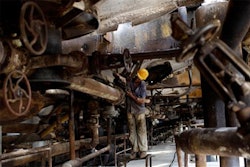LITTLE ROCK, Ark. (AP) — The drought is costing Arkansas ranchers an estimated $128 million, according to a study from agriculture officials released Thursday.
The study released by the University of Arkansas System Division of Agriculture says some ranchers sold off their herds because they couldn't afford to feed their animals. The $128 million figure is a conservative one that assesses only costs to ranchers, according to the study's authors, Michael Popp and Nathan Kemper.
The drought this summer was an extension of dry conditions from the summer of 2011, so the study covers the period between August 2011 and July 2012.
"It was important to help the beef cattle industry quantify its losses," said Popp, a professor of agricultural economics. "Getting a handle on the reasons and the costs is the first step to helping the industry recover."
Some Arkansas ranches have hundreds of cows, but most are small producers. The average ranch in the state has about 35 head.
The study shows ranchers lost $141 per cow, on average, which translates to about a $5,000 loss for the average producer.
The drought struck early in the summer, turning pastures brown and forcing ranchers to scramble for hay to keep their cows fed. Ranchers rely on grasses to feed their cattle for most of the summer. Grass often becomes scarce late in summer, when ranchers will put out hay, as they do in the winter.
Hay prices rose sharply as the supply tightened, complicated by an embargo that makes it illegal to ship hay from an area with fire ants to an area that has not yet been infested.
This year, most ranchers spent their winter hay budgets to get through the summer and many had to sell off cows early or send ones they wanted to keep to the sale barn.
Some producers wound up with fewer calves because of the harsh conditions.
The researchers said they couldn't quantify some costs, such as buying and transporting additional drinking water. Next year, ranchers will have to pay to restock herds.
"These costs vary from farm to farm and can be a significant expense to cow-calf producers," Popp said.
Other elements of the drought's impact are still being calculated, Popp said.
"Longer term cow-calf producer economic losses attributed to the drought, such as pasture recovery, increased breeding failures, reduced herd body condition scores and the impact on agricultural input industries will take additional time to quantify," Popp said.






















